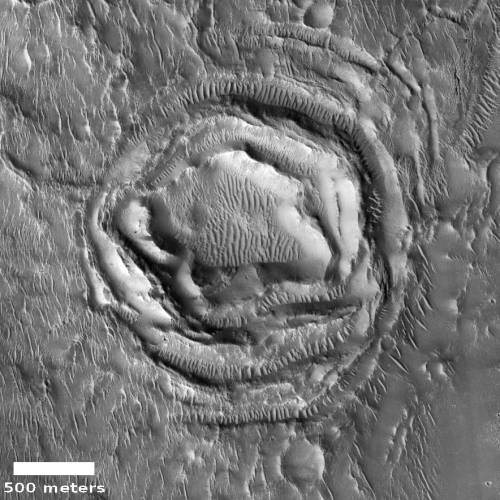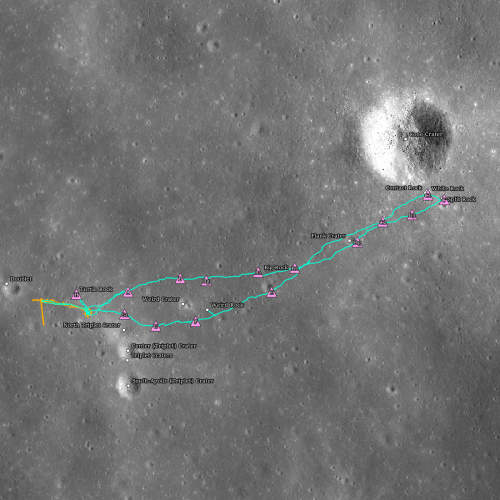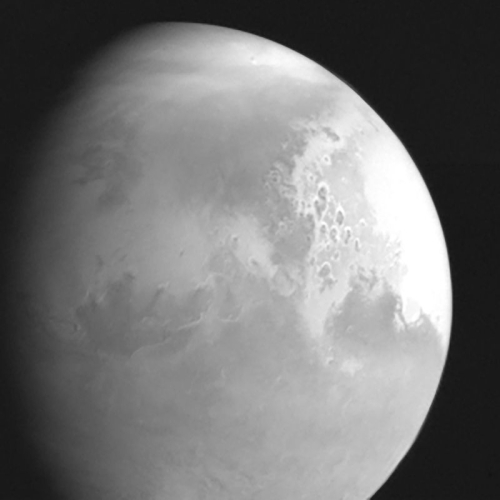China’s Tienwen-1 enters Mars orbit
The new colonial movement: China’s Tienwen-1, carrying an as-yet-unnamed lander/rover, successfully inserted itself into orbit around Mars early today.
With a successful Mars Orbit Insertion, the craft has entered a highly eccentric, equatorial capture orbit of the planet, and controllers will now spend two months undertaking initial activations and checkouts in Martian orbit for the primary science mission while altering the craft’s orbit from equatorial to polar.
In April 2021, the lander, with the rover inside, will detach from the orbiter and prepare for Entry, Descent, and Landing. Prior to launch, 23 April 2021 was given as the target landing date.
The landing location is within Utopia Planitia and will — if the orbit insertion burn is completed successfully — utilize a combination of aerobraking, parachute descent, retrorocket firing, and airbag deployments to achieve a soft touchdown on the Martian surface. After landing, the rover will be deployed — ideally on the same day — to begin a planned 90 Sol (Martian day) mission to categorize the local environment.
The suspected landing site in Utopia Planitia is at about 25 degrees north latitude. Though it is in the northern lowland plains, this latitude places it south of the latitudes (greater than 30) that scientists now believe ample ice likely exists underground but accessible. The lander/rover carries radar equipment capable of detecting evidence of underground ice, and will look nonetheless. If it finds any, this will be a significant discovery.
Two down, one to go. Next week, on February 18th, the American rover Perseverance will attempt its landing in Jezero crater.
The new colonial movement: China’s Tienwen-1, carrying an as-yet-unnamed lander/rover, successfully inserted itself into orbit around Mars early today.
With a successful Mars Orbit Insertion, the craft has entered a highly eccentric, equatorial capture orbit of the planet, and controllers will now spend two months undertaking initial activations and checkouts in Martian orbit for the primary science mission while altering the craft’s orbit from equatorial to polar.
In April 2021, the lander, with the rover inside, will detach from the orbiter and prepare for Entry, Descent, and Landing. Prior to launch, 23 April 2021 was given as the target landing date.
The landing location is within Utopia Planitia and will — if the orbit insertion burn is completed successfully — utilize a combination of aerobraking, parachute descent, retrorocket firing, and airbag deployments to achieve a soft touchdown on the Martian surface. After landing, the rover will be deployed — ideally on the same day — to begin a planned 90 Sol (Martian day) mission to categorize the local environment.
The suspected landing site in Utopia Planitia is at about 25 degrees north latitude. Though it is in the northern lowland plains, this latitude places it south of the latitudes (greater than 30) that scientists now believe ample ice likely exists underground but accessible. The lander/rover carries radar equipment capable of detecting evidence of underground ice, and will look nonetheless. If it finds any, this will be a significant discovery.
Two down, one to go. Next week, on February 18th, the American rover Perseverance will attempt its landing in Jezero crater.




